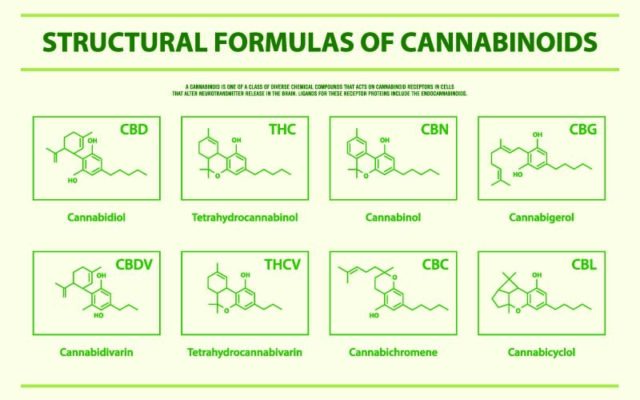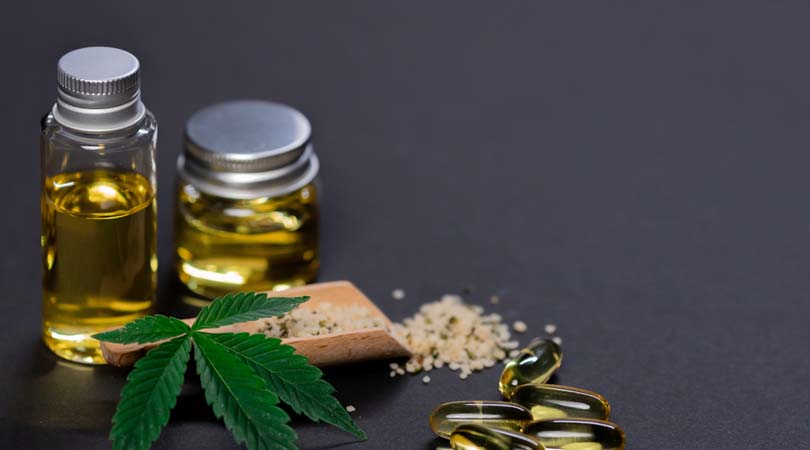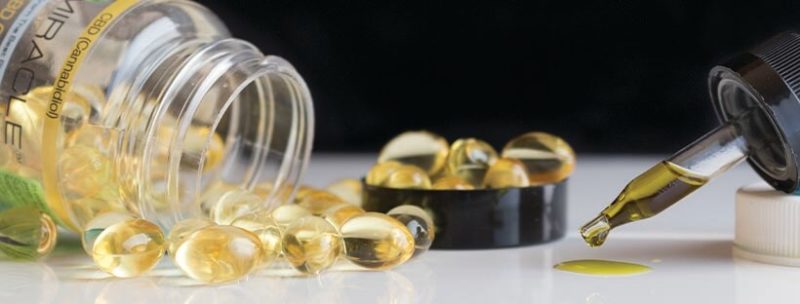Cannabis
So What Are Cannabinoids?
The cannabis plant is made up of many different components. The main components that give you the benefits and effects of marijuana are known as cannabinoids. There are 66 types of cannabinoids found in marijuana, but only a handful are typically discussed when cannabis arises in conversations.
THC (or delta-9-tetrahydrocannabinol) is the cannabinoid that does most of the work, while all the other cannabinoids are essentially THC’s assistants in one way or another.
How Do Cannabinoids Work?
Cannabinoids attach to receptors in your brain’s endocannabinoid system (ECS), resulting in a euphoric feeling. THC is THCA while still raw in the marijuana buds. Once you heat marijuana in a process referred to as decarboxylation, you convert THCA to THC.
This decarboxylation process produces the cannabinoid, Cannabinol (CBN), known for inducing users’ sleepiness. So pot farmers who want to cultivate CBN for its chilled-out vibe let their cannabis plants flower for longer.
THC or CBD?
While THC induces euphoric and intoxicating effects, cannabidiol (CBD) does not. It can still give you the benefits of stress relief and relaxation, but you will not get high. Also, keep in mind that the benefits of CBD alone will not be as substantial as that of THC. CBD can be taken by itself but works best when taken in tandem with products containing THC.
Studies have shown that CBD can moderate any possible adverse effects of THC. It has also been shown to reduce THC-associated inflammation from chronic use. So it is not a question of CBD vs THC, but rather a perfect pairing of the two creates the best experience.
Cannabinoids Subcategories:
There are many different cannabinoids in cannabis, but some play a more prominent role than others, each with its own effects. Let’s take a look at some of the most common cannabinoids found in cannabis flowers.

- Tetrahydrocannabinol (THC): The main psychoactive compound that gets you high.
- Cannabidiol (CBD): It’s the second most prevalent cannabinoid in cannabis plants.
- Cannabinol (CBN): Active ingredient that is known for its sleep and sedative properties.
- Cannabigerol (CBG): works to help fight inflammation, pain and nausea.
- Cannabichromene (CBC): cannabinoid that acts on inflammation
- Cannabicyclol (CBL): non-psychoactive cannabinoid that is a degradative product.
- Cannabielsoin (CBE): a metabolite of cannabidiol
- Cannabitriol (CBT): phytocannabinoid acting as an oxidation product of THC
- Cannabinodiol (CBDL): a derivative of CBD
In Conclusion on Cannabinoids
If you are a weed smoker, you probably know what THC and CBD are, but it is also helpful to know other minor cannabinoids. Many of these lesser-known cannabinoids are helpful for various situations and conditions.
Try some of the best cannabis in Canada and experience the effects of top-grade cannabinoids at Weed Delivery Vancouver. Save 20% off your first order, get complimentary gifts, and earn rewards points on the best quality buds in BC. Anyone is welcome on our site. So make your weed list, visit our shop and experience the premium nature of our products and the convenience of our services.
Interesting Reads
What is Cannabis?, The Benefits, Uses, & Effects of Marijuana, Indica vs Sativa Guide
References
- Carter, A. (2019, May 17). A Simple Guide to the Endocannabinoid System. Healthline. Available At: https://www.healthline.com/health/endocannabinoid-system
- Rettner, R. (February 28, 2019). THC vs. CBD: Which Marijuana Compound Is More Beneficial? Live Science. Available At: https://www.livescience.com/64886-thc-cbd-marijuana-therapeutic-effects.html
- Cesarone, T. (February 6, 2020). GPR55 – HOW CBD PREVENTS THC-INDUCED INFLAMMATION. Cannabis Life Network. Available At: https://cannabislifenetwork.com/gpr55-how-cbd-prevents-thc-induced-inflammation/
- Weed List. (2021, November 20). Buy Weed Online in Canada. Available at: https://weedlist.org/
- Mackie, K. (2008, May 20). Cannabinoid receptors: where they are and what they do. National Library of Medicine, National Center for Biotechnology Information. Available at: https://pubmed.ncbi.nlm.nih.gov/18426493/


